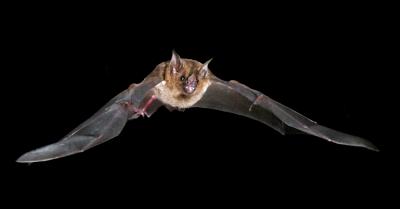Researchers from the University of North Carolina at Chapel Hill have discovered a new bat SARS-like virus that can jump directly from its bat hosts to humans without mutation. However, researchers point out that if the SARS-like virus did jump, it is still unclear whether it could spread from human to human.
The discovery, reported in the Nov. 9 issue of Nature Medicine, is notable not only because there is no treatment for this newly discovered virus, but also because it highlights an ongoing debate over the government’s decision to suspend all gain of function experiments on a variety of select agents earlier this year. The move has put a substantial standstill on the development of vaccines or treatments for these pathogens should there be an outbreak.
“Studies have predicted the existence of nearly 5,000 coronaviruses in bat populations and some of these have the potential to emerge as human pathogens,” said senior author Ralph Baric, a faculty member at the Gillings School of Global Public Health and world-renowned expert in coronaviruses. “So this is not a situation of ‘if ‘there will be an outbreak of one of these coronaviruses but rather when and how prepared we’ll be to address it.”
SARS first jumped from animals to humans in 2002-2003 and caused a worldwide outbreak, resulting in 8,000 cases, including one case in Chapel Hill. With nearly 800 deaths during that outbreak, SARS-CoV presents much like flu symptoms but then can accelerate, compromise breathing and bring on a deadly form of pneumonia. The outbreak was controlled through public health interventions and the original virus was thought to have been extinct since 2004.
Baric and his team demonstrated that the newly-identified SARS-like virus, labeled SHC014-CoV and found in the Chinese horseshoe bats, can jump between bats and humans by showing that the virus can latch onto and use the same human and bat receptor for entry. The virus also replicates as well as SARS-CoV in primary human lung cells, the preferred target for infection.
“This virus is highly pathogenic and treatments developed against the original SARS virus in 2002 and the ZMapp drugs used to fight Ebola fail to neutralize and control this particular virus,” said Baric. “So building resources, rather than limiting them, to both examine animal populations for new threats and develop therapeutics is key for limiting future outbreaks.”



Caso queira seguidores de uma determinada
zona geográfica, a melhor hora é entre a
saída do trabalho e jantar. http://www.harald-j-brueckner.de/cgi-std/gaestebuch.cgi